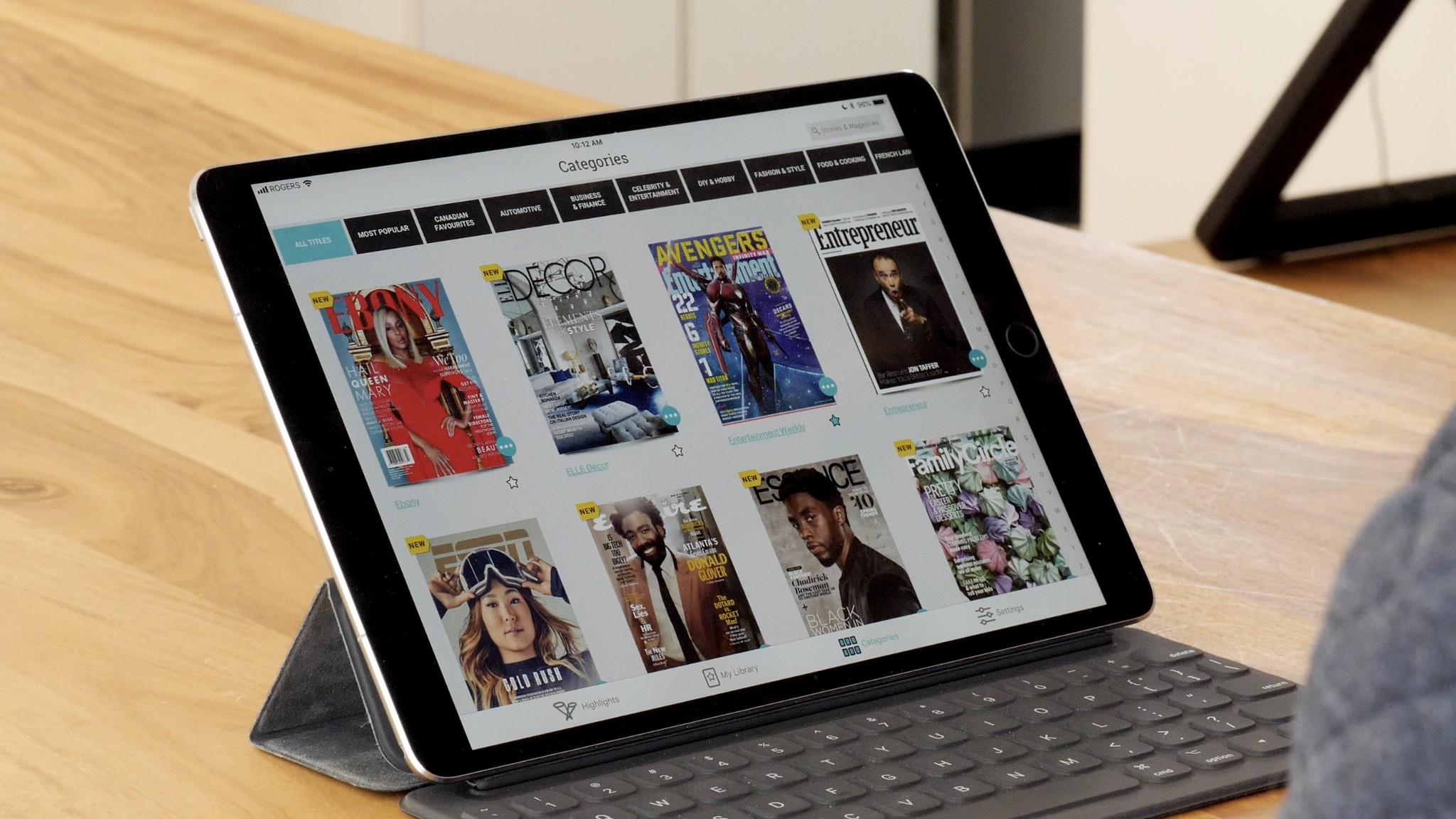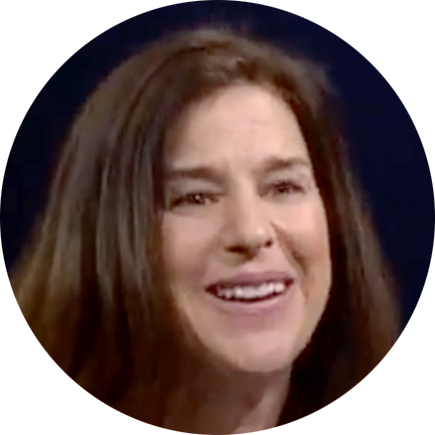Apple News expected to launch Texture-style subscription service

April 17, 2018: Apple News expected to launch Texture-style subscription service
Texture, recently acquired by Apple (see below), offered Apple Music-style all-you-can-read subscription access to over 200 magazines a month. And like Apple Music, that's the kind of value and revenue add that makes core businesses like iPhone even more attractive and valuable.
Rolling Texture up into Apple News and offering a similar subscription service has been the assumption since day one, but it looks like it might take up to a year to get off the ground.
Mark Gurman, writing for Bloomberg:
Apple Inc. plans to integrate recently acquired magazine app Texture into Apple News and debut its own premium subscription offering, according to people familiar with the matter. The move is part of a broader push by the iPhone maker to generate more revenue from online content and services.The world's largest technology company is integrating Texture technology and the remaining employees into its Apple News team, which is building the premium service. An upgraded Apple News app with the subscription offering is expected to launch within the next year, and a slice of the subscription revenue will go to magazine publishers that are part of the program, the people said.
WWDC 2018, the presumed September 2018 iPhone event, or even a potential March 2019 event could all serve as public launching points for the new service.
My question: In addition to magazines, could Apple get the big newspapers on board?
But what does that mean for current Texture users (including on Android) and for Apple News? In the age of fake news, extremist click-bait, bots, and bubbles, will anyone really care about trusted sources and sustainable publishing? And how much does Apple really care, given neither News nor Texture are available in more than half-a-handful of countries?
Master your iPhone in minutes
iMore offers spot-on advice and guidance from our team of experts, with decades of Apple device experience to lean on. Learn more with iMore!
Transcript

Eddy Cue: It's a great, great day for us. We announced that we did an acquisition this morning, of Texture. Texture is an app that has been in the iOS Store. It's beloved by our iPad users. You get access to all of the great magazines from Condé Nast, from Time, Meredith, Hearst.

Rene: "We just did an acquisition." That's how Eddy Cue, Apple's senior vice president of Internet Software and Services, announced the purchase. What is Texture? It's been called the Netflix of magazines, but that's not quite right. It's similar to Netflix, in that for one monthly subscription price, you get access to a whole range of catalog content.
In this case, from a bunch of magazine publishers instead of TV studios. It's different than Netflix in that they don't produce their own original content. It is purely a catalog play. It's also different because they provide a level of curation broken down, not just at the magazine scale, but at the article scale.
In fact, when you launch Texture, you start off with highlights -- new and noteworthy stories, top 10 reads, collections, a daily roundup, top stories in health and fitness, top stories in entertainment, top stories in science and tech, top stories in business and finance, quick reads.
That lets you dive, not just into the magazines you might be interested in, but into a whole range of stories you may have never even thought you'd be interested in. Of course, you can also go to your library and you can see all the magazines that you've added to it, so that if you have favorite magazines, you can make sure that you never miss an issue.
You can also go into different categories and see all the magazines that are available. You can look at any of those magazines at any time. Let's say I don't read "Entertainment" every month, but I see they have a cover story on Marvel's, "Avengers," and I want to dive into that, I can get straight to it. The interface is OK. It's not great, but it's OK. You can page through like a traditional magazine.
Somewhat confusingly, depending on the magazine, you either just continue swiping sideways to read the story, or you swipe across for different stories, and then up and down to read those stories. You can also go in at any time and see all the back issues for a magazine. If you're not just interested in the current issue, but you want to see the previous issues, they're all there as well.
That's a fairly compelling offer on multiple axis. Not only can you read most of the magazines you want any time you want, including downloading them for offline reading, but also means you don't have to acquire, carry around, and dispose of a bunch of physical media. You can have hundreds of magazines all in one iPad. Here's what Eddy Cue had to say on apple.com...
"We're excited Texture will join Apple, along with an impressive catalog of magazines from many of the world's leading publishers. We are committed to quality journalism from trusted sources and allowing magazines to keep producing beautifully designed and engaging stories for users." That's something Cue hammered on at South by Southwest, as well.

Eddy: I think that there are a few things that we've always cared about in Apple News. First of all, we wanted to bring great articles from trusted sources in a beautiful layout. Obviously, Texture, with the brands that I just told you about, they have magazines from "Esquire" to "Vanity Fair" to "Time" to "Sports Illustrated."
Some of the best magazines in the world, so they have some incredible content, and content that takes a long time to create.

Rene: There are in-depth articles. We're really excited about bringing that into Apple News to augment all of the other content that we have now from thousands of publishers. The key to ours is about curation. We want the best articles. We want them to look amazing...
We want them to be from trusted sources so we don't have a lot of issues that have been going around in the marketplace. If you're not familiar with the issues they've been having, it involves everything.
From the rise of fake news, which propagates across the Internet much faster than actual vetted factual news, things like bots, which have been used, or accused of, manipulating news in an attempt to manipulate events, and of people living in bubbles increasingly getting more extremist views and not challenging themselves with new and different ideas.
With Facebook actually going so far as to deprecate news and to deprecate content from publishers in favor of content shared by other people which may or may not have any bearing on the actual reality going on in the world outside us. This is how Cue addresses that...
"Look, today, for some of the publishers that we have, including some very large ones like CNN, we already account for 60 to 70 percent of the articles read across the web and other services. We've become a pretty decent-sized player in a short amount of time around it. We also started where our customers that were reading were following about four publishers in Apple News a year ago..."
"Today, they follow more than 20. There's been tremendous growth in Apple News. We just want to continue to accelerate that by bringing things that are startups, like "PACIFIC," which is the name of Byers' newsletter. To things that are big, like Condé Nast." At which point, [laughs] Byers presses him again about Google and Facebook.
Cue responds, "It's always hard to sit from the outside and talk about others. I do know that, for ourselves, when we get into this, we think when you have a large platform there's a lot of responsibility. We've always taken a great deal of responsibility for our platform, starting with iTunes when we did the Music Store to the App Store, and certainly Apple News podcasts. We have a bunch of rules..."
"We came up with guidelines that had to be followed in order to participate in there. At times, we got a lot of hate for it. People weren't happy that we had guidelines. The other part is that nobody is completely free. There's no such thing as free. There's no pornography on any of these sites..."
"People draw lines, and you can decide where you want to draw the line. We do think free speech is important, but we don't think white supremacy is free speech that's important. This harkens back to iOS 5 and the introduction of 'Newsstand.'"

Scott Forstall: We've now created a single place, right in the App Store, that combines all of these newspaper and magazines so you can find them all in one place. When you purchase them, they're automatically downloaded and placed in the Newsstand. It's a new place right on the Home screen. It looks like a beautiful news rack.

Rene: Even back then, Apple and Steve Jobs wanted to do something to support the news -- almost a romanticized Aaron Sorkin-esque version of the news -- as something that could educate and elevate humanity, that could bring knowledge and insight, and depth and clarity, to our communications and our relationships.
Ultimately, the sheer quantity of apps that you had to manage, and the lack of consistency in any of their interfaces, meant that Newsstand could never gain any traction, either in the features that developers and publishers wanted, or the usability that readers wanted. Apple ended up cancelling it. With iOS 9, Apple got back into news. Both with a widget in the Today View and with a new News app.

Susan Prescott: It's right here on the Home screen. The first thing News wants to do is get a sense of what I like. It's going to give me a short list of really great choices to choose from. You'll see as I tap, additional recommendations come in on the bottom to give me even more choices. I read, "Atlantic," "Wired," "New York Times," and "ESPN." I'm still with you, Warriors...
[laughter]

Susan Prescott: ...and, "Daring Fireball." Topics, too -- like science, baking, and travel. I could keep going, but I think that's a great start. I'll tap, done. News creates a personalized feed called, "For You." It's based on the choices I just made, and it's all my news in one place.

Rene: At the most primitive level, it could pull in articles over RSS, and just give you as much or as little as any publisher was willing to provide over RSS. There's also an Apple News format that has its own markup language and lets you create much more dynamic, much more visually interesting, layouts.
Apple signed deals with a variety of publishers to make sure they had, not only had stock content in there, but content from a variety of newspapers and magazines. Many of which are similar to the ones that Eddy Cue called out when he spoke about Texture. Now, initially, the news in the widget and the news in the News app, were completely unrelated. Both were black projects, secret projects.
Neither knew about each other, but come the next version of iOS, that was unified. What you read in the News app was actually reflected in the News Widget. What you tapped on in the News Widget, brought you to the News app. It started to make News into an OS-level service, similar to how photography is handled.
Since then, Apple has done a great job at expanding News -- at expanding editorials, expanding curation, at introducing features for everything from the Oscars to the Winter Olympics. At the same time, they haven't really done much to push News further. There's still no News app for the Mac. There's still no video version of news for the Apple TV.
While News is becoming a better and better product, critically, there's still no real international distribution. Which is incredibly frustrating for people outside the US, the UK, and Australia, the original launch countries. It could be due to different licensing or content regulations, it could be due to future plans Apple has for the product.
This is the company that launched Apple Music in a hundred countries all at the same time, all at once. Yet, they've been unable to get news beyond that small half a handful of countries in the intervening two years. That's not just frustrating, that's flabbergasting. The amount of money that Apple paid for Texture is undisclosed.
Though, at Apple scale, it's probably safe to say it's roughly equivalent to the coins found in the sofa in Eddy Cue's office at Results Way, or, I guess, Infinite Loop. Now, Apple may or may not integrate Texture into Apple News. What Eddy Cue said at South by Southwest strongly suggests that that's the way they're leaning. My understanding is that it's not completely decided yet.
Either way, Apple now has stronger relationships with publishers. They have a subscription platform -- similar to Apple Music -- that they can grow out. Apple has said that they're not changing anything immediately. The Texture app that's available -- on iPhone, and Android, on Kindle, and Windows -- today is still going to be available tomorrow.
Everyone who subscribes to Texture today, will still be able to use it on all of those platforms tomorrow. There are going to be some challenges. For example, the Apple only exists right now in the US and Canada. Which is even worse than Apple's News app. There's also no accessibility built in.
Which is something that's very important to Apple, and something I think they're going to want to address as soon as possible. You have to think that Apple has grander plans for all of this. Apple being Apple, those grander plans are no doubt at the intersection of technology and liberal arts. Apple wants to grow its services and subscription revenue, of course.
Apple also want to solve the problem of News. Apple is hoping that by providing iOS -- and hopefully MacOS eventually -- as a platform, that it can do for News what it did for music in the age of digital downloads, and now digital streaming.
That is, provide access to a huge audience that may not be willing to pay the same price they're used to for individual newspapers or magazines, but will be willing to pay in aggregate for access to all those individual newspapers and magazines. That's absolutely good for Apple. It, once again, makes the iPhone and the iPad more valuable.
Not only are you getting a phone or a tablet, not only are you getting access to TV shows and movies, not only are you getting access to music, but you're getting access to information and to high quality information. It could be good for publishers as well, especially as they increasingly adapt to the digital age.
It could be especially good for them in the age of Google and Facebook, which have basically stolen all of the publisher's content for years, under the guise of providing them with audience, but really as a way to grow their own advertising and marketing bases. Here's what Rupert Murdoch said recently...
"Facebook and Google have popularized scurrilous news sources through algorithms that are profitable to those platforms but inherently unreliable, but the remedial measures that both companies have so far proposed are inadequate commercially, socially, and journalistically. The time has come to consider a different route..."
"If Facebook wants to be recognized as trusted publishers, then it should pay those publishers a carriage fee similar to the model adopted by cable companies. The publishers are obviously enhancing the value and integrity of Facebook through their news and content but are not being adequately rewarded for those services..."
"Carriage payments would have a minor impact on Facebook's profit, but a major impact on the prospects for publishers and journalists."
Tina Brown..."I am very angry and upset about the way advertising revenue has been essentially pirated by Facebook Google world without nearly enough giveback -- no giveback, really -- to the people who create those brilliant pieces that are posted all over their platforms. It's high time they gave back to journalism."
Jeff Zucker..."In a Google and Facebook world, monetization of digital mobile continues to be more difficult than we would have expected or liked. I think we need help from advertising world and from the technology world to find new ways to monetize digital content. Otherwise, good journalism will go away..."
"Everyone is looking at whether these combinations of AT&T and Time Warner, or Fox and Disney, pass government approval and muster. The fact is, nobody, for some reason, is looking at these monopolies that are Google and Facebook. That's where the government should be looking and helping to make sure everyone else survives..."
We've seen this affect even digital publishers. Many of them went all in on Facebook. Many of them even "pivoted" to video to go all in on Facebook's new video product, only to have Facebook switch gears and basically gut any and all revenue from those publications, any and all traffic from those publications, and now they're shutting down, now they're laying off.
Whether or not Apple can change that -- either with Apple News, or Texture, or some other product -- remains to be seen, but it's important that someone is trying. It's important that someone is thinking different.

Rene Ritchie is one of the most respected Apple analysts in the business, reaching a combined audience of over 40 million readers a month. His YouTube channel, Vector, has over 90 thousand subscribers and 14 million views and his podcasts, including Debug, have been downloaded over 20 million times. He also regularly co-hosts MacBreak Weekly for the TWiT network and co-hosted CES Live! and Talk Mobile. Based in Montreal, Rene is a former director of product marketing, web developer, and graphic designer. He's authored several books and appeared on numerous television and radio segments to discuss Apple and the technology industry. When not working, he likes to cook, grapple, and spend time with his friends and family.
